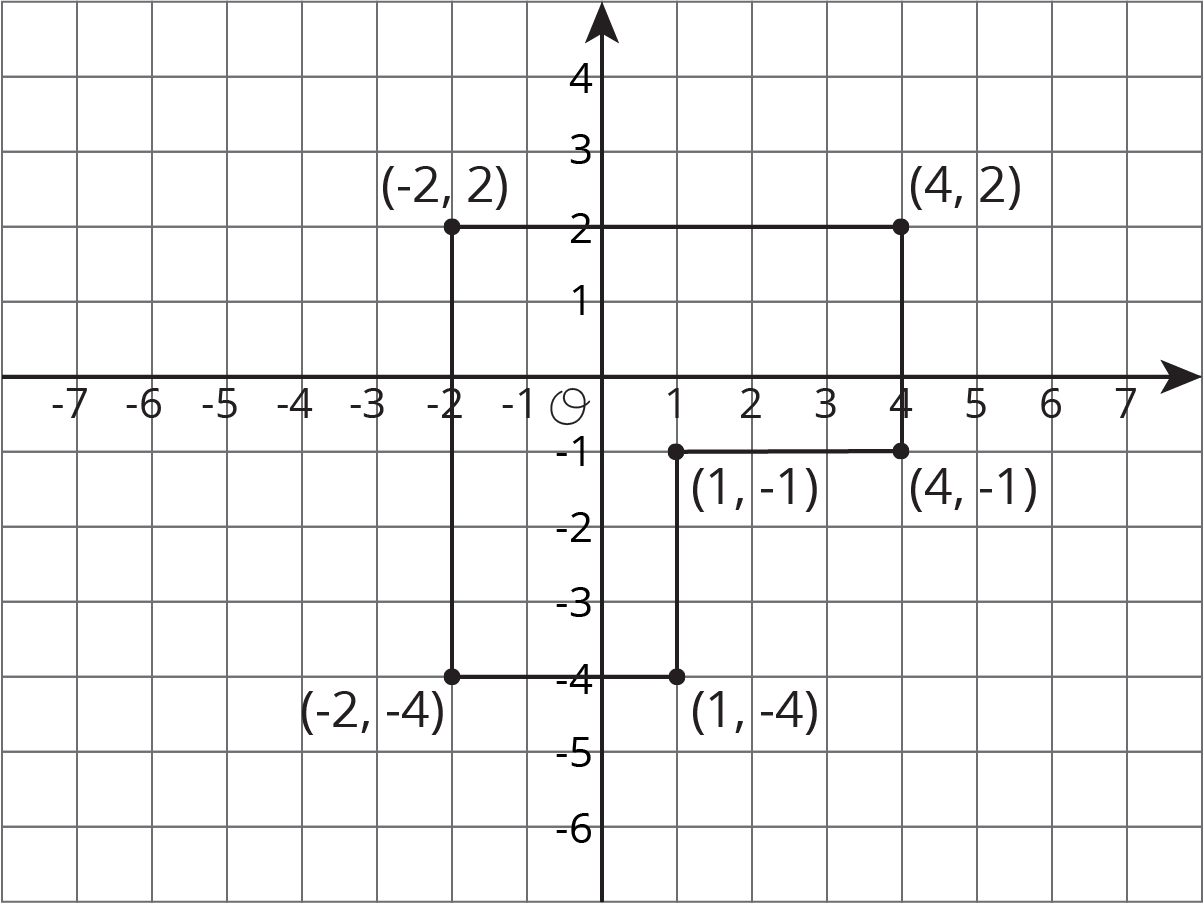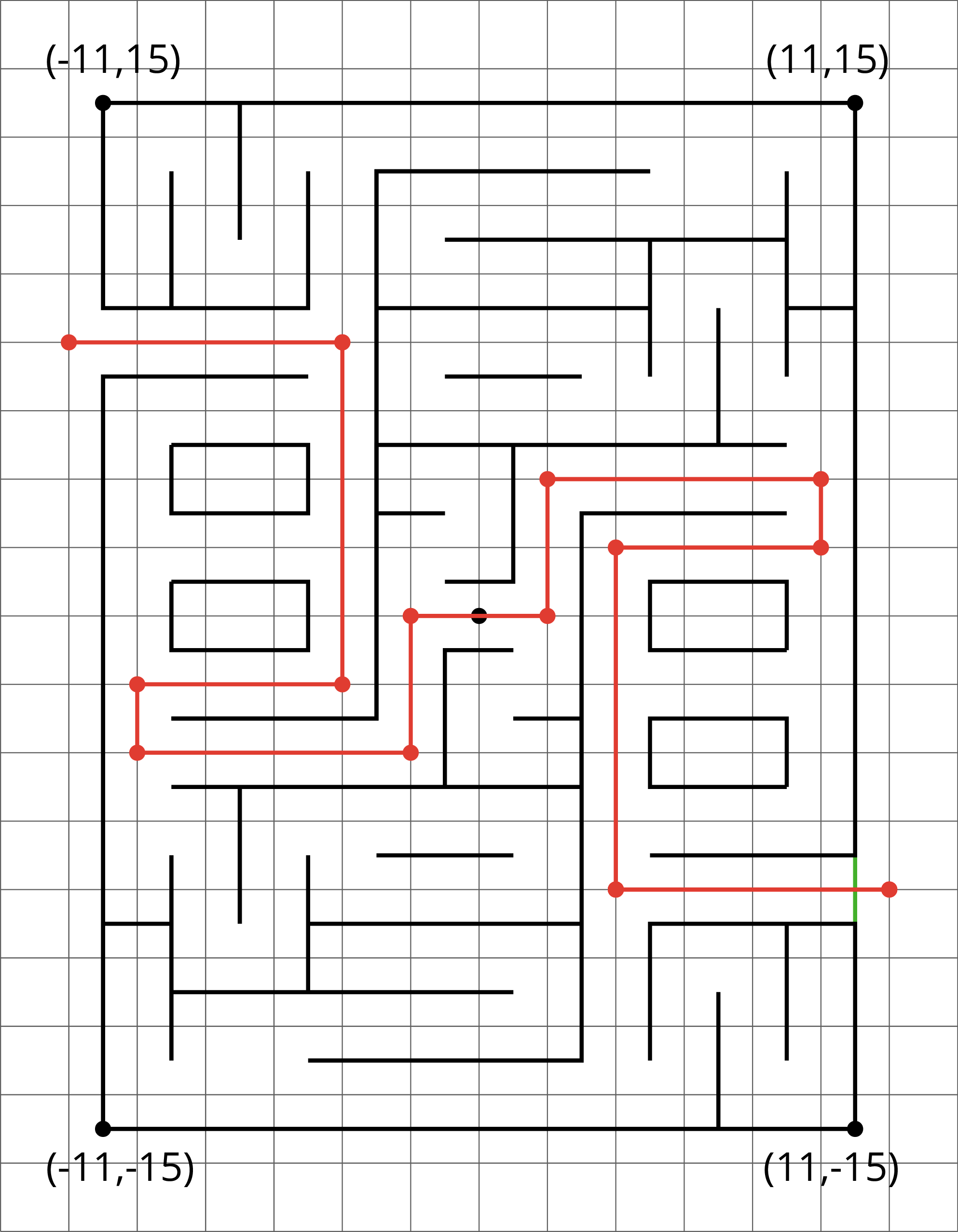We can use coordinates to find lengths of segments in the coordinate plane.

For example, we can find the perimeter of this polygon by finding the sum of its side lengths. Starting from (\text-2, 2) and moving clockwise, we can see that the lengths of the segments are 6, 3, 3, 3, 3, and 6 units. The perimeter is therefore 24 units.
In general:
- If two points have the same x-coordinate, they will be on the same vertical line, and we can find the distance between them.
- If two points have the same y-coordinate, they will be on the same horizontal line, and we can find the distance between them.

